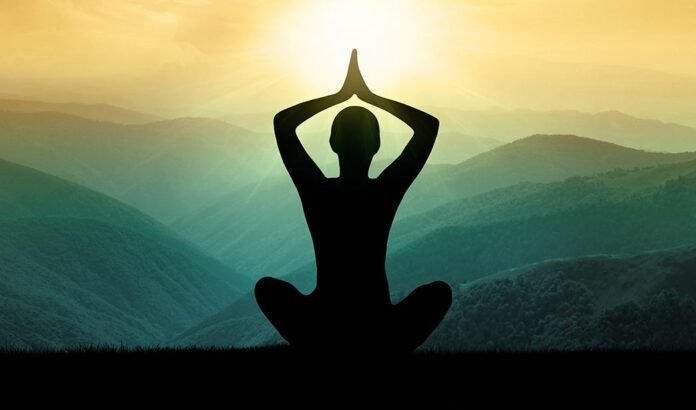In the hustle and bustle of daily life, it can be all too easy to lose sight of the present moment. With distractions and demands at every turn, it’s no wonder that many of us feel stressed and overwhelmed. But there is a way to find inner peace and happiness amidst the chaos: mindfulness.
Mindfulness, as the name suggests, is the practice of being fully present and engaged in the moment. It involves paying attention to your thoughts, feelings, and surroundings in a non-reactive way, without judgment or distraction. By cultivating a sense of awareness and acceptance, mindfulness can help us navigate the challenges of daily life.
What is Mindfulness?
At its core, mindfulness is the practice of being present in the moment. This means paying attention to your thoughts, feelings, and surroundings without distraction or judgment. Mindfulness can take many forms, from meditation and yoga to other forms of mindful movement. However, the goal is always the same: to cultivate a sense of awareness and presence that can help us find inner peace and happiness.
The benefits of mindfulness are numerous and well-documented. Studies have shown that practicing mindfulness can reduce stress and anxiety, improve focus and concentration, increase empathy and compassion, and enhance overall well-being. By incorporating mindfulness into our daily lives, we can cultivate a sense of calm and contentment that can help us stay centered in even the most hectic of situations.
How to Practice Mindfulness
There are many ways to practice mindfulness, and what works best for one person may not work for another. Here are some common mindfulness practices to consider:
-
Meditation
Meditation is one of the most popular mindfulness practices. It involves sitting in a quiet place and focusing on your breath, body sensations, or a particular object or thought. Through meditation, we can learn to calm the mind, reduce stress and anxiety, and cultivate a sense of inner peace.
-
Yoga
Yoga is another popular mindfulness practice that combines physical movement with breath awareness. It can help improve flexibility, strength, and balance, while also promoting relaxation and stress reduction.
-
Mindful Breathing
Mindful breathing is a simple yet effective mindfulness practice that involves focusing on your breath as it enters and leaves your body. This practice can help calm the mind, reduce stress and anxiety, and promote a sense of inner peace.
-
Mindful Eating
Mindful eating is the practice of paying attention to your food as you eat it. This involves focusing on the flavors, textures, and sensations of the food, as well as the act of eating itself. By cultivating a sense of awareness and gratitude for our food, we can promote healthy eating habits and improve digestion.
-
Mindful Walking
Mindful walking is the practice of walking slowly and deliberately, paying attention to the sensations of your feet as they touch the ground. This practice can help improve balance and coordination, as well as promote relaxation and stress reduction.
Benefits of Mindfulness
The benefits of mindfulness are wide-ranging and profound. Here are just a few of the many ways that practicing mindfulness can enhance our lives:
-
Reduces Stress and Anxiety
By helping us stay present in the moment and manage our thoughts and emotions, mindfulness can reduce stress and anxiety and promote a sense of calm and inner peace.
-
Improves Focus and Concentration
Mindfulness practice can help train the mind to stay present in the moment and avoid distractions. This can lead to improved focus and concentration, allowing us to be more productive and efficient in our daily lives.
-
Enhances Emotional Well-being
Mindfulness can help us cultivate a sense of inner peace and happiness by promoting self-awareness and self-acceptance. This can lead to greater emotional resilience and overall well-being.
-
Improves Sleep Quality
By promoting relaxation and reducing stress and anxiety, mindfulness can also improve the quality of our sleep. This can lead to better physical and emotional health.
-
Promotes Physical Health
Mindfulness can have a positive impact on physical health as well. Research has shown that it can reduce inflammation, lower blood pressure, and improve immune function.
Tips for Practicing Mindfulness
If you’re interested in incorporating mindfulness into your daily life, here are some tips to help you get started:
-
Start Small
If you’re new to mindfulness, start with just a few minutes of practice each day and gradually increase the amount of time you spend practicing. Consistency is more important than duration when it comes to mindfulness practice.
-
Practice Consistency
Make mindfulness a regular part of your daily routine, even if it’s just for a few minutes each day. This can help you establish a habit of mindfulness and make it easier to incorporate into your busy life.
-
Let Go of Expectations
One of the key principles of mindfulness is non-judgmental awareness. Try to let go of any expectations you may have about your mindfulness practice and simply be present in the moment.
-
Focus on Your Breath
Your breath is an anchor that can help you stay present in the moment. When you find your mind wandering, simply bring your attention back to your breath and focus on the sensations of the air moving in and out of your body.
-
Practice Gratitude
Take a few moments each day to reflect on the things in your life that you’re grateful for. This can help cultivate a sense of happiness and contentment, which can in turn promote greater well-being and inner peace.
Conclusion
In a world that can often feel chaotic and overwhelming, mindfulness is a powerful tool for finding inner peace and happiness. By practicing mindfulness in its many forms, we can learn to be present in the moment, manage our thoughts and emotions, and cultivate a sense of calm and contentment that can help us navigate the challenges of daily life. Whether you’re new to mindfulness or a seasoned practitioner, there are many ways to incorporate it into your daily routine and experience the many benefits that come with living in the present moment.
Google News | Telegram
















